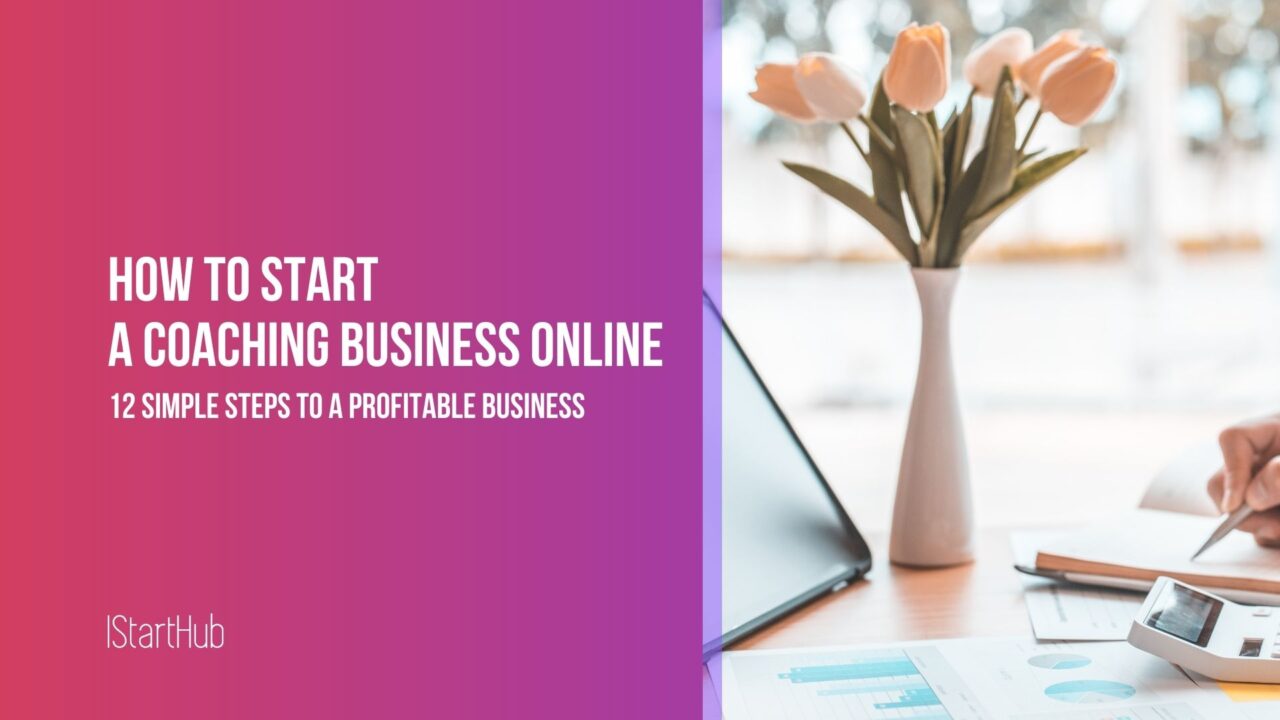Have you been thinking about starting a boutique business but don’t know where to start? You’re probably wondering if it’s a profitable venture, how to choose a niche, and how to reach your customers. Worry no more.
In this post, I offer a step-by-step guide about how to start a boutique business, with all the nitty gritty to help your business grow and succeed.
Interested? Let’s get started.
The State of Retail in 2023
We live in post-Covid times, and consumers and retailers are eager for things to go back to the way they used to pre-Covid. In the last year, we’ve seen growth in retail sales, a change in consumer behaviors, and retailers embracing technology to improve customer experience.
This was largely driven by the increased digital adoption by consumers, which means an increase in remote purchases of goods like apparel, cosmetics, and accessories.
Revenue in the retail e-commerce sales from apparel and accessories amounted to $180 billion in 2021, compared to $144.8 billion in 2020. According to data by Statista, the market revenue is projected to reach $295.7 billion in 2025, just two years from now.
Consumers have become more demanding, and when they want something, they want it now, regardless of the supply chain issues. If a retailer doesn’t satisfy the consumer’s needs, they’ll find a retailer who can.
Competition is stiff, and for retailers to survive the marketplace, they need to create a unified commerce approach. That is, they need to meet consumers everywhere and anywhere – brick-and-mortar stores, online stores, and social media channels – with a better shopping experience, and frictionless pickup, delivery, and return experiences.
Going into 2023, retail businesses will continue to experience disruption. The economy is slowing down (and retail sales are starting to decline).
Deloitte predicts that
“GDP growth will slow to 0.9 percent in 2023 from an estimated 2 percent in 2022 and 5.9 percent in 2021.”
Survey shows that a recession is looming, and this would lead to unemployment and a decline in economic output. Global inflation has lowered consumers’ purchasing power. There’s also the issue of ongoing geopolitical unrest.
But all these things aren’t necessarily bad for business. Retailers who shift their focus and attention to strengthening infrastructure, polishing customer experience, and improving margins will stay in business and realize increased revenues.
Starting a Boutique Business Guide
Don’t let the state of retail scare you. According to ZipRecruiter, on average, an online boutique makes $45,116 a year as of January 2023, and a boutique owner earns $6,626 per month.
However, reaching that level isn’t going to be an easy journey. And there won’t be any shortcuts. It will take hard work, focus, trial and error, and strategic planning. Below, I walk you through how to start an online boutique and live your dream.
1. Choose a niche
Before anything else, you must decide what you want to specialize in. The e-commerce business is massive, and your business might have a hard time picking up if you select a saturated market. A product niche helps you stand out from the crowd, attract consumers, and boost your profits.
While you may want to pick a niche you’re passionate about, ask yourself: Is there demand? Will it be profitable? Targeting a small, specialized part of the population gives you an edge over competitors.
Here are some niche ideas you can check out:
- Unique and handcrafted pottery and ceramics
- Unique and custom-made (scented) candles
- Specializing in a mix of affordable baby clothes and accessories
- Selling a curated selection of vintage and antique clothing
- Plus-size fashion for women
- T-shirts and casual clothes
- Unique home décor items
- Sell jewelry items
- Natural and organic beauty products
A guiding principle when choosing a niche is identifying gaps in the market. Figure out what products are in demand but aren’t offered by other retailers so you can close that gap.
2. Write a business plan and register your business
Once you identify a niche, you’ll need to create a solid business plan. You might not deem a business plan necessary, but it will guide you on how you operate your business. In addition, working with a plan helps you keep track of your progress, goals, and targets.
Here are some factors to address when creating a business plan:
- Market research. You must have a specific target in mind when creating a business, and market research will help you identify this. You’ll want to create buyer personas, where you research their geographic information (age, location, income, etc.), the social media platforms they use, and personal style.
- A thorough market analysis to determine if there’s a market for your products. This might include performing keyword research to help with SEO later when creating your website.
- Financial planning, where you estimate expenses and revenue from the business. This will also include how to price your products.
- Marketing strategy, where you define how you’ll market your products. It may entail strategies like influencer and social media marketing to help promote your business on social media platforms.
Other things to consider:
- Legal requirements for your business, based on where you’re located
- Operations and management
- Company brand identity
- Your business goals and timeline to achieve those goals
3. Decide on your products
Sourcing inventory is a big challenge for small businesses unless you intend to sell hand-crafted or homemade items. You’ll want to choose a business model to adopt, as this will help you determine the products you’ll sell and how to source them.
There are various sourcing methods you could try:
- Manufacturing. Designing your own products is a great business idea as it sets you apart from the competition. However, as your business grows and you get busy, you might not have the time to hand-make every piece of jewelry, pottery, or candle. In that case, a manufacturer can mass-produce the products for you, saving you time and costs.
- Dropshipping. This involves partnering with a third-party supplier, who also fulfills orders. You won’t need to invest in inventory, but the downside is that your profit margins will be low.
- Buying wholesale/reselling. You buy products in bulk and sell them to consumers at a higher price to realize a profit.
- Handcrafting. This method involves creating hand-made products.
- Print-on-demand, where you design a product, like t-shirts or mugs, and have a third party make them and fulfill orders.
You don’t have to use one model. You can mix different models to meet your business needs. Here’s a list of suppliers from where you can source products:
- Alibaba
- Handshake
- Etsy Wholesale
- Orbelo
- Tundra
- DHgate
- Stockable
- IndieMe
- Bulleting
4. Build a brand for your boutique business
You’ve identified your product niche and your target audience. You’ve also created a business plan and know where or how to source the products. Now’s a great time to brand your boutique business.
A brand is your identity and can make or break your marketing strategy. Therefore, choose a business name, logo, and slogan that will reflect your mission.
When creating your brand, make sure it:
- Is eye-catching
- Resonates with your target market
- Represents your brand identity
In addition, your brand should have a clear visual identity. Consumers are attracted to captivating brands. Therefore, do thorough research and create something that your target audience will fall in love with.
For most people, designing a logo might be a challenge. Fortunately, there are dozens of free tools that make this process easier, such as Hatchful, Canva, LogoMakr, Zyro, and Ucraft.
5. Create a pricing strategy
A pricing strategy is a critical step when starting a business. Price your products too high, and consumers will run. Price them too low, and you won’t make a profit.
You want to strike the right balance between a price your customers can afford and one that can generate profit.
To establish this, you’ll need to analyze your customer profile, competitor prices, and your commercial objective. You must also understand the costs involved in bringing your products to the market. Some of the costs you can expect to incur include:
- product sourcing costs
- production time
- website fees
- packaging
- promotional materials
- shipping and storage, among others.
For a beginner, a cost-plus pricing strategy is the simplest. You’ll just add a percentage on top of the total costs to set the selling price. You can also explore other pricing strategies and pick the best fit for your business.
6. Build an online store
Every business should have an online presence to expand its customer reach. You can use a reputable eCommerce platform like Shopify, which offers everything you’ll need to run a successful online boutique.
Apart from supporting business owners with a comprehensive suite of tools, Shopify offers an integrated Point of Sale (POS) and inventory management system, free online business courses, and over 6,000 apps to improve your store’s functionality and shopping experience.
You can also consider other e-commerce platforms like BigCommerce, WooCommerce, Squarespace, and Wix.
7. Think about shipping terms
Having set up shop, you’ll need to figure out how to deliver items to consumers. Since you’ll be conducting most or all your business online, you want to ensure a seamless and stressless shipping experience.
Keep in mind that if the shipping fees are too high, a customer will likely abandon their cart and find another place to shop. Likewise, know that free shipping is expensive and will result in losses. Therefore, be sure to give careful thought to your shipping strategy before launching your boutique business.
8. Market your online boutique
Now that everything is in order, it’s time to launch your business. But how will it reach the right people? By promoting your boutique business on every available channel. There are various tools available to facilitate your marketing strategies.
These are:
- Online ad campaigns on platforms like Instagram, Facebook, Google, YouTube, and Pinterest.
- Partnering with social media influencers. You don’t have to use big influencers. Start with influencers with smaller audiences and expand your reach gradually as you grow.
- SEO to build traffic, attract leads and increase conversions.
- Email marketing to sell, educate, and build loyalty with your customers.
- Public relations (PR) to build relationships with podcasters, bloggers, journalists, and influencers to spread your marketing strategy through their channels.
Key Takeaways
The thought of starting your own business can be daunting. However, once you’ve learned the ropes of how to start a boutique business, you can set yourself up for success. It will take time, effort, and sweat. But the results will be worth celebrating!




